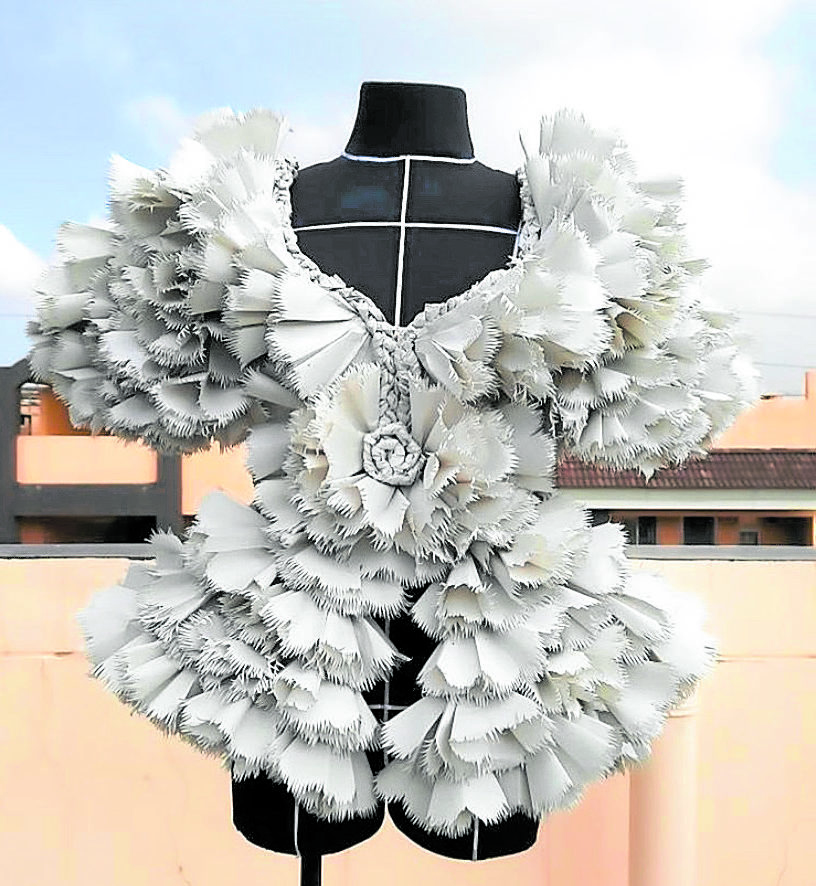
Students worldwide are still trying to cope with the effects of the pandemic. The halting of in-person classes is a major factor that makes online learning a daily struggle for both teachers and students.
The organic exchange of ideas is difficult to sustain when participants are mere squares on a screen. It’s doubly so for students of fashion. After all, how does one learn proper
pattern-making or dressmaking without a teacher to look over your shoulder and check on your progress?
Two months after the initial lockdown in mid-March, SoFA Design Institute managed to set up its digital campus, sofadigitalcampus.com, which houses all their online programs.
“In May, we rolled out online summer workshops, quickly formed a Remote Learning Committee and put together the SoFA Create (Collaborative Remote Experience Through Art and Transformative Education) Program,” Amina Aranaz-Alunan, the school’s founding partner and executive director, told Lifestyle in an email interview.
“This is the framework and method we designed to deliver all our programs through remote means. It is focused on creative and holistic growth, guided self-study sessions, live sessions with teachers, meaningful digital and tactile activities, one-on-one consultations, online submissions and fair evaluations, virtual mentorship, and even a SoFA Community wellness program,” she added.
With the programs in place, the staff has been working from home, where they hold online classes for students. As part of their digital campus, SoFA has a creative tools section where students can rent or buy materials such as sewing machines, drafting kits and even dress forms.
Staying relevant
When designer Jojie Lloren opened F.A.B. Creatives Manila three years ago, his goal was to give those who wanted to enter the fashion profession a better foundation. The pandemic, however, disrupted his and practically everyone else’s plans.
To bring down their monthly overhead dues, the school transferred from Makati to Pasay, where Lloren’s atelier is located. They now offer a few online workshops like Entrepreneurship and Creative Process.
“We adapted safety protocols and guidelines to ensure the safety of our personnel and students. Our just-resumed face-to-face classes are limited to four students, who are encouraged to bring their own food from home,” Lloren told Lifestyle in an email interview.
Even with all the online programs and safety protocols in place, how are fashion schools staying relevant when retail is in the doldrums? Lloren is cautiously optimistic.
“Fashion will always manage to survive crises. It might be in a slump now, but an upward trajectory is to be expected,” he said. “The pandemic period is actually a good time for the students to learn how to adapt and adjust, and eventually apply these as reference for professional and business survival in the years to come.
“The future seems bleak but this doesn’t mean that education is no longer necessary. Learning doesn’t stop. Students finishing their studies and getting work after would help the industry get back on its feet again,” Lloren added. Beyond the present
Aranaz-Alunan is looking beyond the present because, she says, that’s what SoFA has always been focused on: the molding of design leaders and visionary thinkers.
“We always encourage our students to think beyond the present, and create new products and experiences for a reality that does not yet exist. So we see the current situation as perhaps the biggest design opportunity for our young creatives,” she said.
Understanding that sending their children to fashion school at this time can put additional strain on parents’ already tight budgets, Aranaz-Alunan said that as a school, they provided them with several installment payment options, offered scholarships, didn’t increase tuition and also waived some fees.
Slim’s Fashion and Arts School in Makati shut down operations at the start of the lockdown. School director Mark Higgins told Lifestyle that for many years, he and his late sister Sandy had discussed the idea of online classes. The pandemic put a halt to that, so they focused on developing online courses immediately.
“I did a lot of research on pandemics and told my sister that this would last a while and become quite chaotic, so there was no point attempting to plan for any in-person classes anytime soon,” Higgins said.
Instead, they are developing a new curriculum based on their regular courses, but specifically focused on distance learning “without any compromises on the quality of education.”
“All the courses will be conducted live with an instructor for each class. There will also be a combination of instructional videos, documentaries as well as class discussions and interactions. However, because our courses are not just creative but also highly technical, they will not be launched until January 2021,” he said.
Online learning, like everything else, will take some getting used to, but humans are resilient.
“As we enter a new way of living, it is all the more relevant now to think outside the box, to create new norms, new perspectives, new solutions through fashion and interior design. We always tell out students not to allow the current situation to cripple them. In fact, now is the time to stretch their creative limits to find groundbreaking ways of adapting to the new reality,” Aranaz-Alunan said.